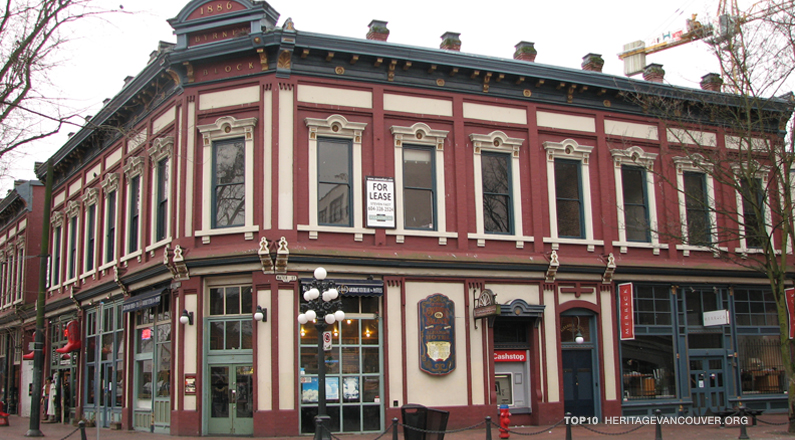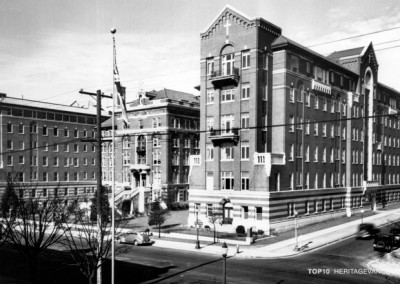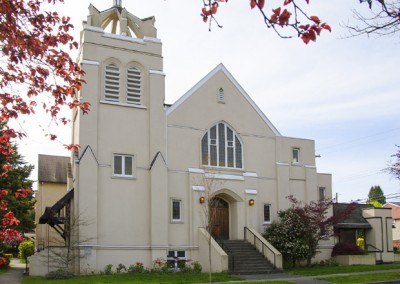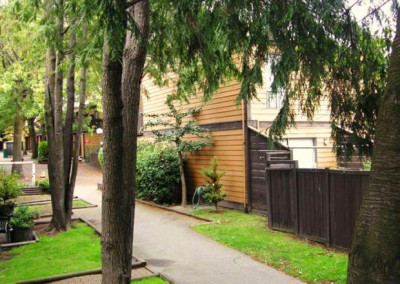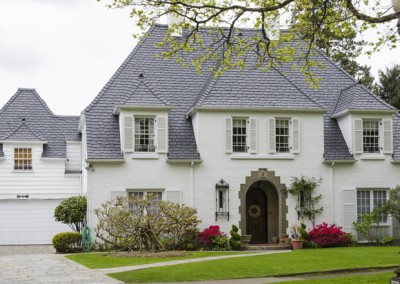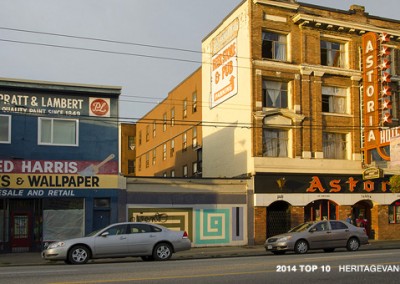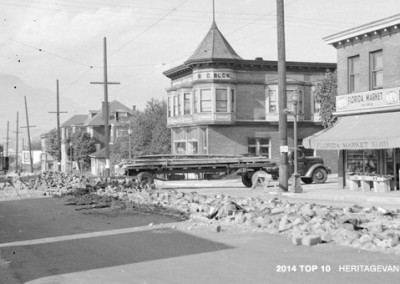In the late 1960s freeway construction threatened to demolish the historic heart of Vancouver: Gastown, Chinatown and Strathcona. A committed group of citizens and local politicians were able to stop the destruction, and in 1971 Gastown and Chinatown were designated as “Historic Areas” by the Provincial Government.
Thanks to their efforts, Gastown has grown into a vibrant enclave for shopping, tourism, and dining while still possessing great socio-economic diversity; today, trendy restaurants and design studios coexist with social service providers and low-income housing.
The retention of heritage assets has contributed heavily to the success of the Gastown neighbourhood and is due in part to good planning policy and heritage preservation/revitalization incentive programs. Today this area is once more threatened by a number of development proposals unsympathetic to the height, profile and rhythm of the streetscape due to the suspension of a number of these critical incentive programs.
Threat
What is the threat to Gastown
While Gastown’s heritage assets have remained relatively stable since its designation, this is only because of well-managed incentive programs and determined efforts by advocates and planning staff to ensure development proposals reflect the heritage character of the area.
One of the distinctive characteristics of Gastown is its “sawtooth” streetscape of varying height roofs. In the 1990s some owners along Alexandra Street were allowed to construct rooftop additions to take the height of their buildings to the maximum 75-feet permitted by the zoning bylaw, creating a uniform streetwall of flat roofs. This upward inflation came to be described as the “Alexandra Street Syndrome” and was perceived as a clear threat to Gastown’s distinctive identity. Since the roof top additions replicated existing building styles it was hard to identify the difference between old and new construction.
In 2002, the Gastown Heritage Management Plan was adopted by the City in the hope of discouraging the Alexander Street syndrome. Accompanied by design guidelines, the plan compensated developers with “bonus density” (or the difference between the existing floor space ratio of a site and what would otherwise be allowed if the existing building was not there). In return, the existing building would be retained keeping the existing scale and streetscapes of the area intact.
This technique was highly successful for some time as it made the retention of the existing structures economically more attractive than demolition/facade retention or the unflattering rooftop additions allowed by the previous regulatory regime (which continued in existence, unused).
By 2007 the “Density Bank” (the mechanism for trading bonus density) had become unsustainably large, due in part to sizeable additions from projects that were not in Gastown.
Further additions to the Density Bank were accordingly blocked pending absorption of the excess. Unless the bank is reactivated the only option available to building owners reverts to the Alexandra Street Syndrome, eliminating the sawtooth profile in the same way as occurred 15 years ago.
Multiple proposals of this nature are now coming forward. Some are proposing demolition of designated heritage-designated buildings without even the retention of their historic facades.
Significance
Why is Gastown significant?
Most buildings in Gastown were constructed between the Great Fire in 1886 and the start of the First World War in 1914.
In 1971, Gastown – along with Chinatown – was designated as a “Historic Area” by the Provincial Government. In 2009 the Federal Government recognized Gastown as a “National Historic District”. It forms one component in the larger area recognized by the City as a Historic Precinct.
Numerous developments based on the now suspended incentives have been successful precisely because the essential scale of Gastown has been largely retained and enhanced. With its engaging urban character, its complexity of uses and appeal to the creative community and cultural tourists, Gastown is more alive than ever.
All of this could be lost through inappropriate and insensitive developments now coming forward.
Position
Heritage Vancouver’s position
Heritage Vancouver continues to support a development regime for Gastown that recognizes its restored vibrancy and authenticity, its unique scale, and particularly its saw tooth profile.
We recommend that the City:
- Reactivate the Heritage Amenity (Density) Bank program and other incentives allowed by the Gastown Heritage Management Plan, particularly given that the Bank has been reduced to a healthier level.
- Terminate the prior planning provisions that facilitated the Alexandra Street Syndrome.
- Reinforce a policy of protection for Gastown’s existing height, scale and sawtooth building profile with no exceptions.
- Within the Gastown Heritage Management Plan, consider additional tools that could be used to encourage building owners to restore and conserve their properties such as facade restoration grants and other zoning relaxations.
Updates
News articles:
Are SRO rooms being lost in Gastown redevelopment? It depends on who’s counting
Stanley Hotel (1906) & New Fountain Hotel (1899), 33 W Cordova
Vancouver Sun; John Mackie; March 27, 2018
Controversial Gastown proposal reduced, by three feet
Stanley & New Fountain, 33 W Cordova
Vancouver Sun; John Mackie; November 14, 2017
A new fountain of heritage controversy in Vancouver’s Gastown
Stanley & New Fountain hotels, 33 W Cordova
Vancouver Sun; John Mackie; June 17, 2016
Our letters:
Historic Stanley Hotel & New Fountain Hotel, 33 W Cordova
November 23, 2017
New Fountain Hotel & Stanley Hotel – Proposed Rezoning, 33 W Cordova
July 12, 2016
Heritage Revitalization Agreement Amendment – Boulder Hotel, 9 W Cordova
January 19, 2015
